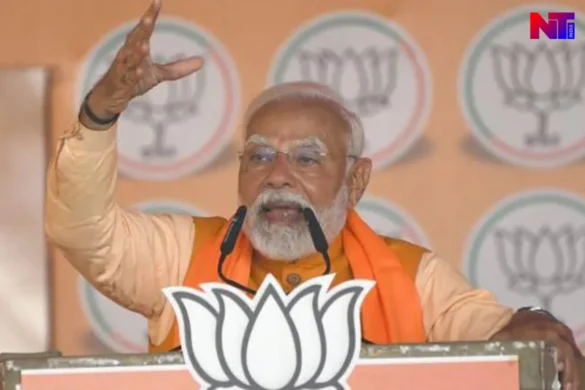In a resounding electoral triumph, Prime Minister Narendra Modi’s Bharatiya Janata Party (BJP) has swept the Delhi legislative assembly elections, marking its first government formation in the capital in 27 years. The BJP secured a decisive victory, winning or leading in 48 out of 70 seats, according to the Election Commission of India. This clear majority surpasses the 35-seat threshold needed to form the government.
The incumbent Aam Aadmi Party (AAP), led by former Chief Minister Arvind Kejriwal, trailed behind with 22 seats, humbly accepting the people’s mandate and congratulating the BJP on their win.
“Development wins, good governance triumphs,” declared Prime Minister Modi on social media platform X, emphasizing his party’s commitment to Delhi’s progress and assuring that they would leave “no stone unturned” in developing the capital.
For the BJP, this Delhi victory is more than just an electoral gain; it’s a symbolic and strategic foothold in the nation’s capital, a territory they’ve been out of power in since 1998. The party invested heavily in the Delhi campaign, deploying top leaders including Modi and Home Minister Amit Shah.
The election outcome is a significant setback for the AAP, which had governed Delhi since 2013, known for its welfare-focused governance. Recent corruption allegations and the arrest of key leaders, though denied by the party, appear to have eroded public trust. While AAP also governs Punjab state, losing Delhi raises questions about its future trajectory, particularly after its appeal waned among the middle class, a demographic once drawn to Kejriwal’s anti-corruption platform.
Political experts believe this victory in Delhi reinforces Modi’s national standing, especially after the BJP’s reduced majority in the previous general election. Conversely, the defeat throws the already fragmented opposition into further disarray, giving the BJP a clear advantage as the next electoral cycle approaches.
Key AAP leaders, including Arvind Kejriwal and Manish Sisodia, suffered defeats in prominent constituencies, highlighting the extent of the BJP wave. Incumbent Chief Minister Atishi secured a narrow victory, underscoring the widespread shift in voter sentiment. Over 60% of Delhi’s electorate participated in the polls, with most exit polls accurately predicting a BJP majority.
The BJP campaign strategically targeted Kejriwal and AAP, capitalizing on corruption allegations related to a now-scrapped alcohol policy that led to the jailing of key AAP figures. The BJP’s “double-engine” pitch, emphasizing synchronized governance between the state and federal levels, resonated with voters seeking stability and improved governance.
Despite Delhi’s unique governance structure, where the federal government controls key areas like public order, police, and land, while the state legislature handles education and health, the election campaign largely centered on welfare promises. Both BJP and AAP pledged improvements in public services and financial assistance to specific demographics.
Interestingly, Delhi’s persistent air pollution crisis, a major concern for the city of over 30 million, remained largely absent from the campaign discourse, even though parties mentioned it in their manifestos.
This historic win marks a new chapter for Delhi, signaling a significant shift in the political landscape and solidifying the BJP’s dominant position in Indian politics.

